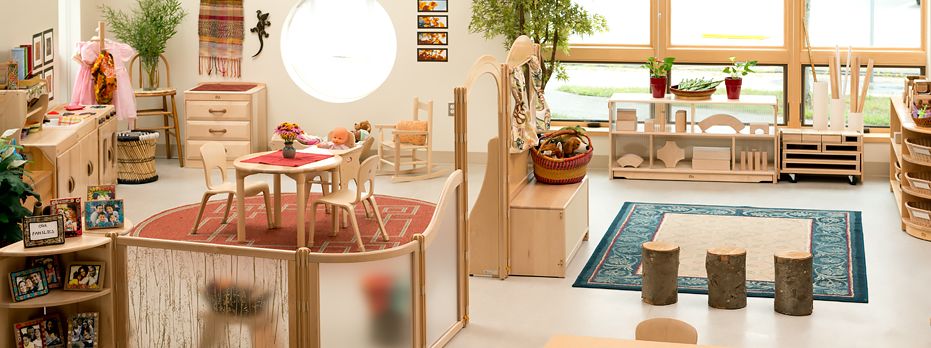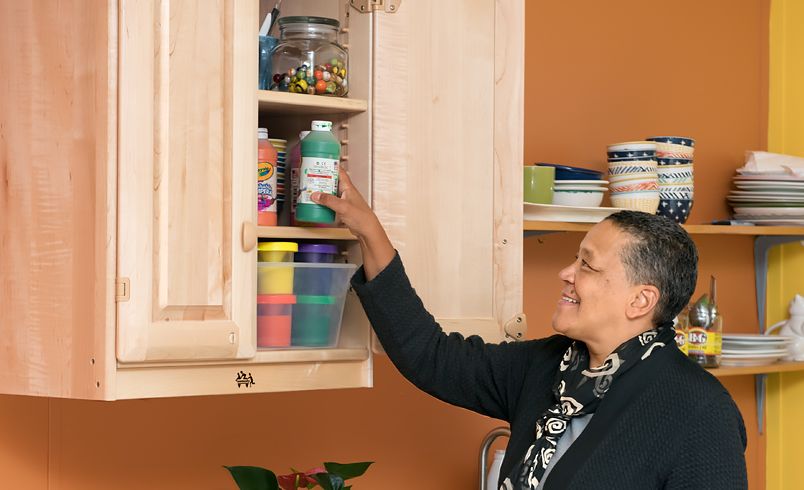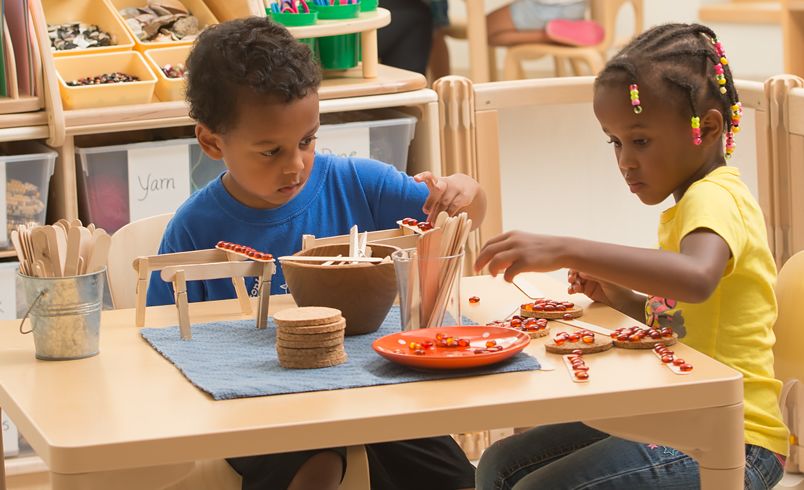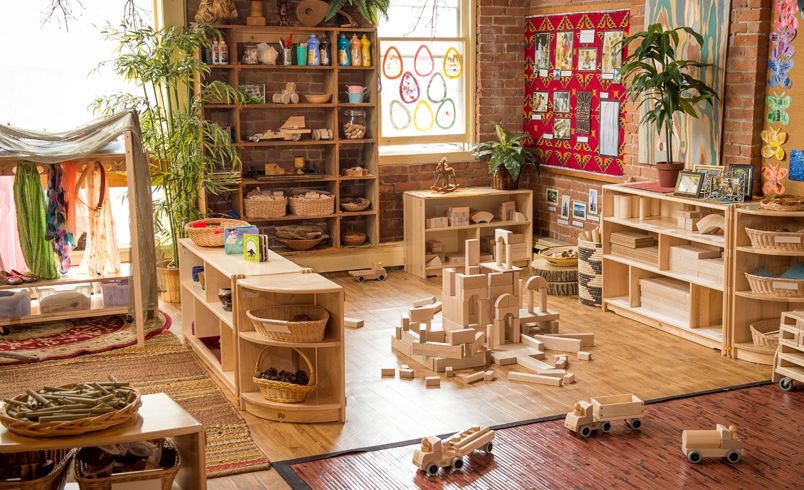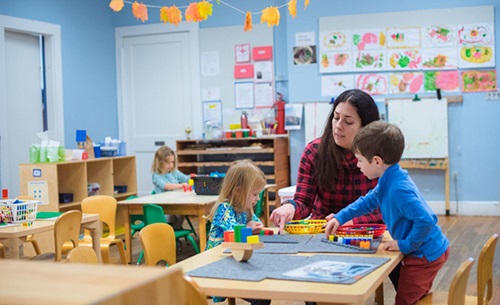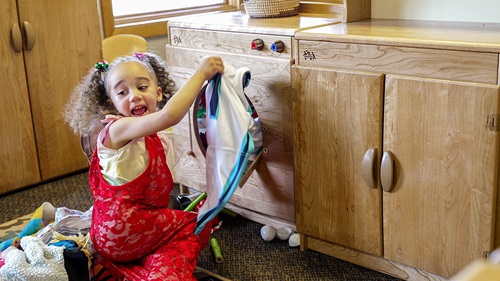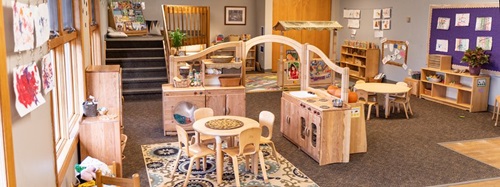Designing for Imagination
Creating Buildings to Help Young Children Learn
| August 2017Every parent is familiar with the following scene: It’s a birthday party, and your toddler has just unwrapped the present you spent hours picking out online. Yet it’s not the toy that has your child’s attention—it’s the wrapping paper.
Why are items like wrapping paper, ribbons, and bows so endlessly fascinating to our children?
The answer involves how young children learn. Scientists will tell you that as children explore their world, they create neural connections. The act of touching, smelling, or even tasting that wrapping paper (all parents have been there) actually creates new pathways in the brain. In short, when creating early learning environments, we should design for imagination, not prefabrication.
This point was driven home for me, while I was writing an article on the 5 Building Blocks of Design for Early Learning for School Planning & Management. One of the article participants, Gabriella Rowe, head of school at The Village School in Houston, Texas, said, “Children learn through process, not product. Instead of providing toy castles, we want them to build their own castles. If you give a child something prefabricated, there is no process and there is no learning.”
How can we, as educators and designers, create spaces that are all about the process of learning? How do we design for imagination?
Here are some simple considerations in creating a process-oriented environment.
Imagination is messy. Think for a moment about a child creating a castle. It could be made of blocks. The windows could be buttons or beads, pipe cleaners, sticks, milk cartons, scraps of fabric—the list of potential materials goes on and on. Storage is a critical factor in the design of early learning environments. A prefabricated castle fits neatly in a corner. But the materials needed for a three-year-old to build a castle? Not so much.
When planning for storage, base your design on how students will use the room. Keep project materials for children in low shelving that’s easily accessible. Think about using double-sided cabinets with open shelves and clear plastic containers. This combination lets students see the available materials as they decide what will make the best drawbridge or castle turret.
Try to consolidate teacher storage as much as possible in a central location that serves multiple rooms. This reduces classroom clutter and gives students more space to move. Think about high storage closets that maximize efficiency with a small foot print, for in-classroom storage. Make sure shelves are 18 to 24 inches deep to accommodate boxes and reams of paper.
It is also a good idea to leave one corner of the classroom free for storage of large seasonal items like tricycles, scooters, kites, or large balls. If possible, position this space close to outdoor access to minimize wear and tear on your indoor environment.
And speaking of wear and tear…Imagination can be weathering on the environment. While three-year-olds are busy creating those castles, they will also be taking a toll on tables, cabinets, and wall surfaces. For this reason, many early childhood educators insist on quality over quantity when it comes to furniture and furnishings.
To design for durability, make sure you invest in the high-traffic areas. Table surfaces should be plastic laminate or butcher block wood. Linoleum is another good choice because the material has a soft, natural look and recovers well from scrapes, cuts, and nicks.
Flooring surfaces are also important, as they need to absorb heavy use and be a comfortable place where children can sit, lay, and play. Luxury Vinyl Tile or linoleum flooring provides a good balance of durability and comfort. Some schools even opt for porcelain tile paired with large area rugs. If at all possible, stay away from carpet. There simply isn’t a carpet tile on the market with the resilience to stand up to a room full of imaginative three-year-olds.
Imagination deserves celebration. Let’s go back again to that castle. Your students have created masterpieces. They’ve touched, smelled, tasted, heard, and observed their way to thousands of new neural connections. Now you need to celebrate their achievements.
Early learning environments can be designed to celebrate the school or to celebrate the students. Many centers, like The Village School, want an environment that is a blank slate. Lavish graphics and themes don’t fill the hallways or classrooms; student work does.
To truly celebrate your students’ work, carefully plan out display areas and surfaces. Placing display space above cubbies is a good way to welcome students in the morning. For large expanses of wall, create built-in bulletin boards which turn an otherwise dull part of the room into a constellation of student art.
By following these few simple steps, you will create a classroom designed to enhance imagination and optimize learning. The key is to always consider the student. Let them create their own path to learning, and the results will be transformative.

